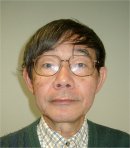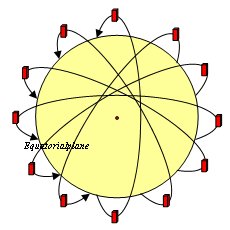|
Plenary Lecture
The Study of an Optimal Earth
Observing System Employing Dive and Ascent Satellites

Professor Fumiaki Imado
Department of Mechanical Systems Engineering
Shinshu University
4-17-1 Wakasato Nagano
Nagano 380-8553 JAPAN
E-mail:
imado@imado1.shinshu-u.ac.jp
Abstract: DAS (Dive and Ascent Satellite) has the ability to change
its altitude in the orbital plane. The authors have noticed the
characteristics of DAS, and have been studying the optimal (minimum fuel)
control of DAS for the purpose of earth observation. In this paper, we
propose some constellations of DAS which can observe a wide area of the
earth in association with the optimal orbital control of DAS. In the study,
the normal orbit of DAS is assumed to be a 400km altitude circular one. As
the observable window of one DAS is very limited, we first studied the
orbital inclination change of DAS, which was proved to require too much
fuel. Next, we studied the extension of the time to reach the observation
point. The result also showed that too much fuel is required for changing
the reaching time. One of the most important advantages of DAS is that it
can observe more precisely by lowering its altitude, however, quick
observation is most important, it can enlarge the observable window by
increasing the altitude. Following to the concept, some constellations of
DAS are studied and proposed. The future work is to construct an optimal
constellation with DASes which can observe anywhere on the earth in a short
time with minimum fuel consumption.

Fig. A constellation with 12 DASes
Brief Biography of the Speaker:
March 1945 Born in Tokyo, Japan
March 1968 BS, March 1970 MS, March 1973 Ph.D Graduate course of
Aeronautics, University of Tokyo
April 1973 - Engineer Central Research Laboratory, Mitsubishi Electric
Corporation
April 1977 - Senior Engineer, 1984- Chief Engineer, 1991- Department Manager
April 1994 - Professor, Department of Mechanical Systems Engineering,
Shinshu University
Guest researcher and professor
1994, 1996, 2000.:NAL(Current JAXA), Japan
1999, Technion, Israel
Guest Lecturer
1991-1993, 1995, 1998. CSIST, Taiwan, 1998, KAIST Korea, 2002, Kiev Univ. of
Tec, Ukraine, 2000, 2008, Silesian Univ. of Tec, Poland, etc.
Reviewer and Contributor of J. of Guid, Cont. and Dyn, Automatica, IEEE
Journals etc. as well as Domestic journals, Korean and Iranian journals.
Founding Editor of Information Technology Econometrics and Management
Achievements include many patents for satellites, bombs, missiles, antennae
etc.
Fields of Study and Research:
Guidance and Control in Aerospace Fields
Nonlinear Optimal Control and Dynamic Games
Covariance Analysis of Nonlinear Systems
Robotics
|
|